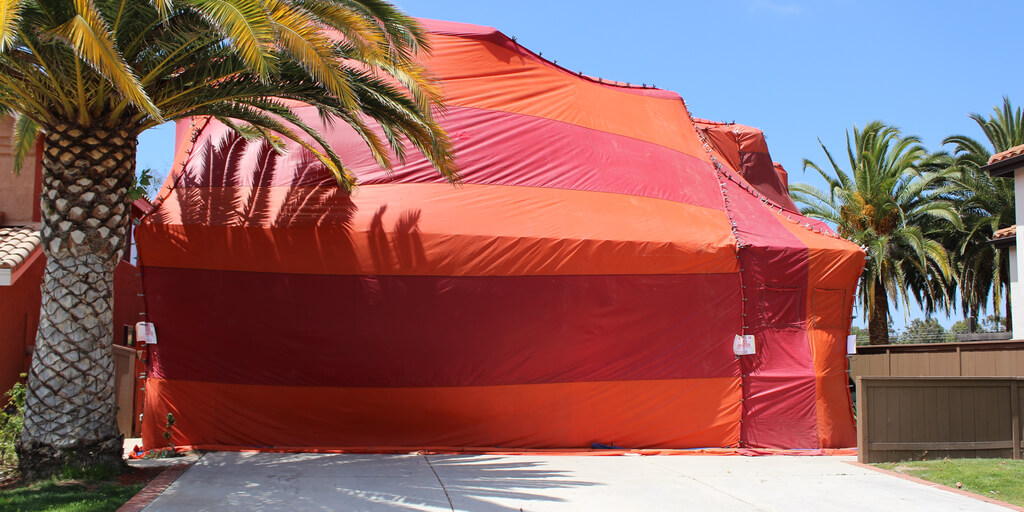Starting around March of each year in South Florida many neighborhoods start to look as if the carnival has rolled into town. Driving through your community you may see brightly multi-colored tarps that have been placed over tops of homes or businesses. This tenting is most likely due to our annual drywood termite mating season. *
One of the most common questions we receive from customers is, “Won’t that just chase the termites from my neighbor’s property over to mine?”. Thankfully, that is not the case. Your neighbor fumigating their home is one of the most neighbourly things they can do to help you prevent having drywood termites invade your home.
As previously mentioned, drywood termites swarm at certain times of the year (in South Florida, swarms have been documented in each month besides December. March to May are peak.) depending on different factors such as humidity and temperature. When these termites swarm, large numbers venture out into the environment looking for new areas to colonize. These termites called alates match with a member of the opposite sex to pair up with to begin infesting a piece of wood. From there these termites become established in that piece of wood and grow their colony. In approximately 5 years, the colony will have grown enough for it to be able to develop its own alate termites and then send out its own batch of swarms. A large portion of those people infested with drywood termites do not know they have a problem until they see swarming termites inside their home for the first time, unfortunately that usually means that the problem has already been there for at least five years. Here at Q & L Pest Management, we highly recommend having your home including attic and crawl space inspected annually to stay on top of any termite issues.
Tent fumigations will not cause termites to move from house to house. This is a common misconception. Another misconception is that if termites are not being seen inside the home, then they must be gone. Drywood termites do not leave a home for good unless the colony has been removed or properly treated and eliminated. Even when drywood termite activity is not being seen, the termites are still somewhere inside the home, eating wood twenty fours a day, 365 days a year until eliminated.
In the pest control industry, there are a difference of opinions on what is the best course of action when dealing with drywood termites in an advanced stage of maturity (swarms). The University of Florida’s Fumigation School recommends the best course of action at that point is to strongly consider structural fumigation. The benefit to structural fumigation is that it does not need to know exactly where all the drywood termites are in a structure instead it only needs to know the buildings dimensions. At that point a team of state licensed fumigators tent the structure and introduce a gas which penetrates into the hiding locations of the termites which in turn eliminates the colony.
Structural fumigation may not be a viable option for everyone such as those who live in properties that are connected to other structures (townhouses, apartments, condos, etc.). In that case, all people must be out of the affected and connected structures during the fumigation process. This may not be financially feasible or logistically possible in certain circumstances. In that case, there are other remedies available to help take care of a drywood termites infestation.
Reach out to one of our representatives now to speak more about drywood termite questions and the treatment options available.
*Tent fumigations can also be performed for bed bugs, rodents, roaches, wood boring beetles, and in unique situations subterranean termites.
